Related Research Articles

Isaac Asimov was an American writer and professor of biochemistry at Boston University. During his lifetime, Asimov was considered one of the "Big Three" science fiction writers, along with Robert A. Heinlein and Arthur C. Clarke. A prolific writer, he wrote or edited more than 500 books. He also wrote an estimated 90,000 letters and postcards. Best known for his hard science fiction, Asimov also wrote mysteries and fantasy, as well as popular science and other non-fiction.
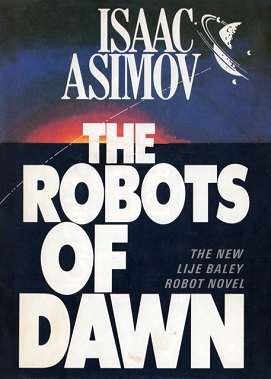
The Robot Series is a series of thirty-seven science fiction short stories and six novels created by American writer Isaac Asimov, from 1940 to 1995. The series is set in a world where sentient positronic robots serve a number of purposes in society. To ensure their loyalty, the Three Laws of Robotics are programmed into these robots, with the intent of preventing them from ever becoming a danger to humanity. Later, Asimov would merge the Robot series with his Foundation series.
The Galactic Empire series is a science fiction sequence of three of Isaac Asimov's earliest novels, and extended by one short story. They are connected by their early place in his published works and chronological placement within his overarching Foundation universe, set around the rise of Asimov's Galactic Empire, between the Robot and Foundation series to which they were linked in Asimov's later novels.

The Three Laws of Robotics are a set of rules devised by science fiction author Isaac Asimov, which were to be followed by robots in several of his stories. The rules were introduced in his 1942 short story "Runaround", although similar restrictions had been implied in earlier stories.

Stanley Grauman Weinbaum was an American science fiction writer. His first story, "A Martian Odyssey", was published to great acclaim in July 1934; the alien Tweel was arguably the first character to satisfy John W. Campbell's challenge: "Write me a creature who thinks as well as a man, or better than a man, but not like a man." Weinbaum wrote more short stories and a few novels, but died from lung cancer less than a year and a half later.
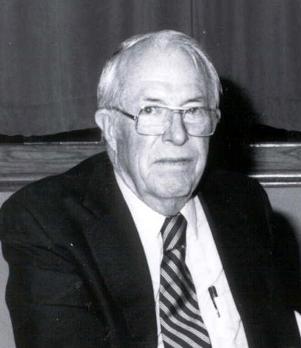
John Stewart Williamson, who wrote as Jack Williamson, was an American science fiction writer, one of several called the "Dean of Science Fiction". He is also credited with one of the first uses of the term genetic engineering. Early in his career he sometimes used the pseudonyms Will Stewart and Nils O. Sonderlund.
"Robbie" is a science fiction short story by American writer Isaac Asimov. It was the first of Asimov's positronic robot stories. In 2016, "'Robbie" won a retrospective 1941 Hugo Award for best short story. "Robbie" was the fourteenth story written by Asimov, and the ninth to be published. It was the first story in Asimov's Robot series.
This is a list of short stories by American writer Isaac Asimov. Asimov is principally known for his science fiction, but he also wrote mystery and fantasy stories.

The Early Asimov or, Eleven Years of Trying is a 1972 collection of short stories by Isaac Asimov. Each story is accompanied by commentary by the author, who gives details about his life and his literary achievements in the period in which he wrote the story, effectively amounting to a sort of autobiography for the years 1938 to 1949.
The Golden Age of Science Fiction, often identified in the United States as the years 1938–1946, was a period in which a number of foundational works of science fiction literature appeared. In the history of science fiction, the Golden Age follows the "pulp era" of the 1920s and 1930s, and precedes New Wave science fiction of the 1960s and 1970s. The 1950s are, in this scheme, a transitional period. Robert Silverberg, who came of age then, saw the 1950s as the true Golden Age.

Neil Ronald Jones was an American writer who worked for the state of New York. His first story, "The Death's Head Meteor", was published in Air Wonder Stories in 1930, possibly recording the first use of "astronaut" in fiction. He also pioneered cyborg and robotic characters, and is credited with inspiring the modern idea of cryonics. Most of his stories fit into a "future history" like that of Robert A. Heinlein or Cordwainer Smith, well before either of them used this convention in their fiction.
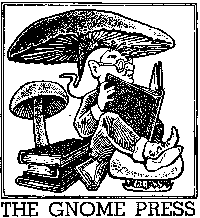
Gnome Press was an American small-press publishing company primarily known for publishing many science fiction classics. Gnome was one of the most eminent of the fan publishers of SF, producing 86 titles in its lifespan — many considered classic works of SF and Fantasy today. Gnome was important in the transitional period between Genre SF as a magazine phenomenon and its arrival in mass-market book publishing, but proved too underfunded to make the leap from fan-based publishing to the professional level. The company existed for just over a decade, ultimately failing due to inability to compete with major publishers who also started to publish science fiction. In its heyday, Gnome published many of the major SF authors, and in some cases, as with Robert E. Howard's Conan series and Isaac Asimov's Foundation series, was responsible for the manner in which their stories were collected into book form.

Before the Golden Age: A Science Fiction Anthology of the 1930s is an anthology of 25 science fiction stories from 1930s pulp magazines, edited by American science fiction writer Isaac Asimov. It also includes "Big Game", a short story written by Asimov in 1941 and never sold. The anthology was first published in April 1974, and won the 1975 Locus Award for Best reprint anthology.

"Black Friar of the Flame" is a science fiction short story by American writer Isaac Asimov. It was first published in the Spring 1942 issue of Planet Stories and reprinted in the collection The Early Asimov (1972). "Black Friar of the Flame" was the thirteenth story written by Asimov, and was among his least favorite, though this was due more to the multiple rewrites and rejections the story suffered than to its admittedly modest intrinsic merits.
"The Callistan Menace" is a science fiction short story by American writer Isaac Asimov. It first appeared in the April 1940 issue of Astonishing Stories and was reprinted in the 1972 collection The Early Asimov. It was the second science fiction story written by Asimov, and the oldest story of his still in existence.
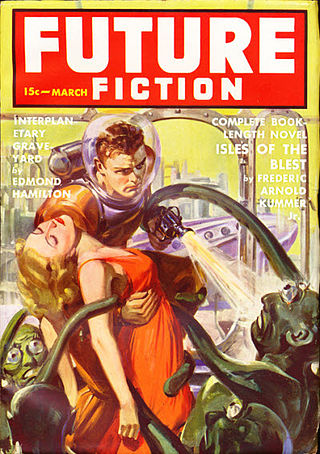
"Ring Around the Sun" is a science fiction short story by American writer Isaac Asimov. It was first published in the March 1940 issue of Future Fiction and reprinted in the 1972 collection The Early Asimov. "Ring Around the Sun" was the fifth story Asimov wrote, and also the fifth to be published.

"Green Patches" is a science fiction short story by American writer Isaac Asimov. It was first published in the November 1950 issue of Galaxy Science Fiction under the title "Misbegotten Missionary", and reprinted under that title in the 1952 anthology Tomorrow, the Stars. It was retitled "Green Patches" in Asimov's 1969 collection Nightfall and Other Stories.
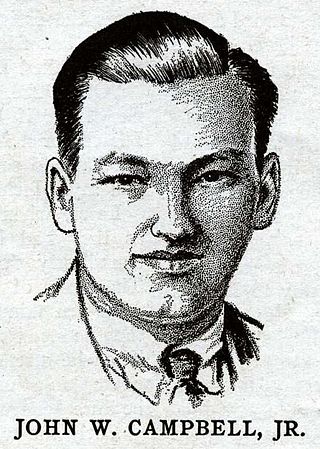
This is a bibliography of works by American writer John W. Campbell Jr.
"Christmas on Ganymede" is a science fiction short story by American writer Isaac Asimov. It was written in December 1940, first published in the January 1942 issue of Startling Stories, and reprinted in the 1972 collection The Early Asimov and the anthology Christmas on Ganymede and Other Stories, edited by Martin H. Greenberg. It was the twenty-sixth story written by Asimov, and the nineteenth to be published.
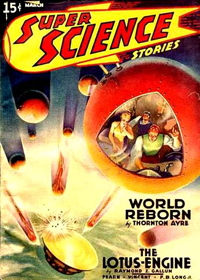
Super Science Stories was an American pulp science fiction magazine published by Popular Publications from 1940 to 1943, and again from 1949 to 1951. Popular launched it under their Fictioneers imprint, which they used for magazines, paying writers less than one cent per word. Frederik Pohl was hired in late 1939, at 19 years old, to edit the magazine; he also edited Astonishing Stories, a companion science fiction publication. Pohl left in mid-1941 and Super Science Stories was given to Alden H. Norton to edit; a few months later Norton rehired Pohl as an assistant. Popular gave Pohl a very low budget, so most manuscripts submitted to Super Science Stories had already been rejected by the higher-paying magazines. This made it difficult to acquire good fiction, but Pohl was able to acquire stories for the early issues from the Futurians, a group of young science fiction fans and aspiring writers.
References
- ↑ Asimovonline FAQs
- ↑ Page 19